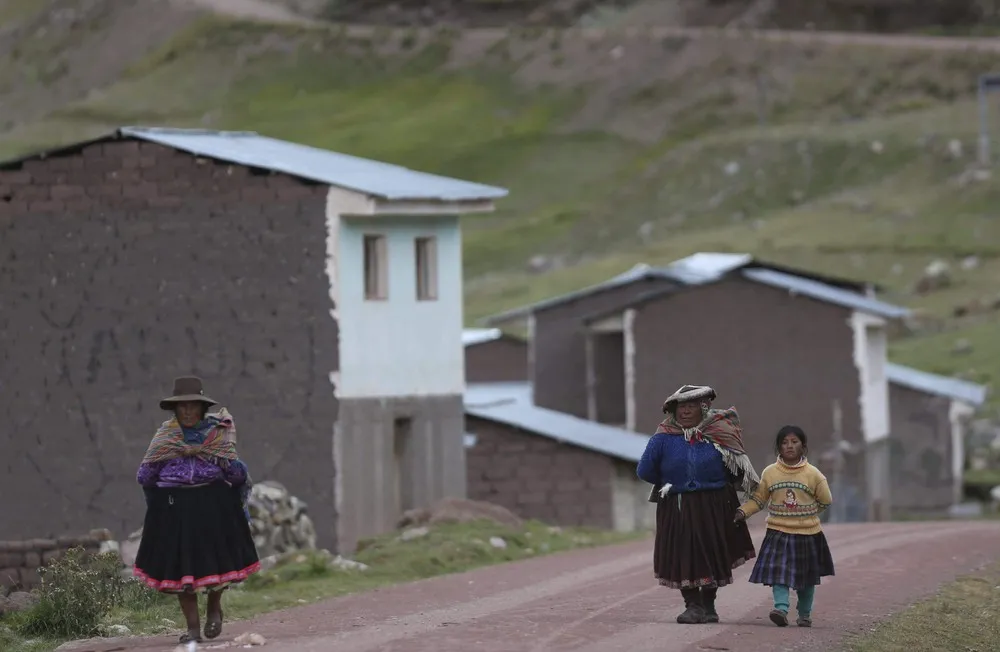|
Tourists gasp for breath as they climb for two hours to a peak in the Peruvian Andes that stands 16,404 feet (5,000 meters) above sea level. They’re dead tired, but stunned by the magical beauty unfurled before them. Stripes of turquoise, lavender and gold blanket what has become known as “Rainbow Mountain”, a ridge of multicolored sediments laid down millions of years ago and pushed up as tectonic plates clashed. It’s only within the last five years that the natural wonder has been discovered by the outside world, earning it must-see status on Peru’s burgeoning backpacker tourist circuit. “You see it in the pictures and you think it’s Photoshopped – but it’s real”, said Lukas Lynen, an 18-year-old tourist from Mexico. The popularity of Rainbow Mountain, which attracts up to 1,000 tourists each day, has provided a much-needed economic jolt to this remote region populated by struggling alpaca herders. Environmentalists, however, fear the tourists could destroy the treasured landscape, which is already coveted by international mining companies. “From the ecological point of view they are killing the goose that lays the golden eggs”, said Dina Farfan, a Peruvian biologist who has studied threatened wildlife in the area just a few hours from the Incan ruins of Machu Picchu. As proof, he points to a 2.5-mile (4-kilometer) dirt trail climbed by tourists to reach Rainbow Mountain that has been badly eroded in the last 18 months, scarring the otherwise pristine landscape. A wetland once popular with migrating ducks has also been turned into a parking lot the size of five soccer fields that fills each morning with vans of mostly European and American visitors. There are more serious threats, too. Camino Minerals Corp., a Canadian-based mining company, has applied for mining rights in the mineral-rich area that includes the mountain. The company did not respond to a request by The Associated Press for comment on its plans. Yet the flood of tourists has meant jobs and hard cash for the local Pampachiri indigenous community, which has struggled with high rates of alcoholism, malnutrition and falling prices of wool for their prized alpaca. Many have abandoned nomadic life for dangerous gold mining jobs in the Amazon. Now, they charge tourists $3 each to enter their ancestral land, netting the community roughly $400,000 a year – a small fortune that has triggered a tax battle with an impoverished, nearby municipality, which has seen no part of the windfall. The surge in tourists also comes with a responsibility to be good stewards of the environment and their new guests, and Pampachiri community leader Gabino Huaman admits he is not sure they are ready to fully handle it. Here: In this April 4, 2018 photo, women walk near to the route to the recently-discovered mountain dubbed Rainbow Mountain, in Pitumarca, Peru. The flood of tourists to see the mountain has meant jobs and hard cash for the local Pampachiri indigenous community, which has struggled with high rates of alcoholism, malnutrition and falling prices of wool for their prized alpaca. (Photo by Martin Mejia/AP Photo)
|

